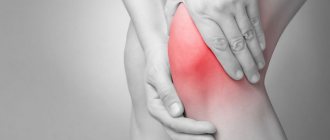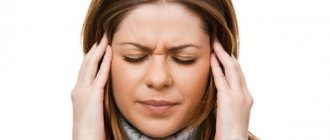Ear pain is a fairly common symptom. Painful sensations in this case give the patient a lot of unpleasant moments, and it is very difficult to simply “endure” such pain. It is noteworthy that pain in the ear is not always associated with diseases of the hearing organ. Such painful sensations can also be caused by other organs that radiate, that is, “giving off,” to the ear. A condition in which the ear hurts, but there is no inflammation in it, is called otalgia.
Otalgia can be caused by many reasons:
Temporal arteritis
The disease is an inflammation of the vessels of the temporal artery.
If the inflammatory process spreads to the ear artery, the patient will also experience pain in the ears. This disease is typical for older women. It causes blurred vision, headaches, pain in the temples, and increased fatigue. Make an appointment right now! Call us by phone or use the feedback form
Sign up
Along the branches of the vagus nerve, pain can radiate to the ear from the esophagus, thyroid gland, and organs of the cardiovascular system.
If you have ear pain, you should definitely consult with an otolaryngologist, since this condition may signal the presence of serious diseases in the body. If the ear is healthy, no abnormalities have been identified, and the pain does not go away, it is necessary to diagnose the nose, larynx, pharynx and, if necessary, other organs to identify the cause of otalgia. Further treatment will depend on the diagnosis.
Prevention methods
Doctors have a number of recommendations that will help prevent headaches behind the ears. They are easy to follow at home:
- observe a regime of rest and physical activity, regularly carry out moderate exercise;
- pay attention to proper brushing of teeth and oral hygiene;
- observe bed rest in case of viral diseases, avoid contact with other people;
- carry out ear hygiene, while cleaning the ears carefully so as not to damage the eardrum;
- avoid hypothermia in the neck and head;
- Seek medical help promptly if headaches occur regularly or occur with high intensity.
The Clinical Brain Institute specializes in the diagnosis and treatment of diseases that manifest themselves as headaches in the ear area. Here you can undergo a full examination and get advice from specialists of a narrow and broad profile. For long-term treatment, a course of procedures and round-the-clock supervision by doctors, it is possible to stay in a hospital. During outpatient treatment, it is important to follow all recommendations and promptly contact for re-examination.
Clinical Brain Institute Rating: 4/5 — 10 votes
Share article on social networks
Treatment for neck pain
For each patient, treatment tactics are developed strictly individually based on the diagnosis, the severity of pathological changes, the presence of concomitant diseases and other factors. Even patients with the same disorders may be prescribed different treatments, since even age and level of physical development influence it.
Nevertheless, the treatment of diseases that cause neck pain is always complex and includes both symptomatic and etiotropic therapy. In other words, it is aimed at eliminating both the symptoms of the disease and the causes of its occurrence. The main components of therapy are often:
- drug treatment;
- osteopathy;
- manual therapy;
- massage;
- physiotherapy (phonophoresis, carboxytherapy, ozone therapy, RF current pressure therapy);
- individual sessions with a rehabilitation specialist.
When diagnosing pathologies of the cervical spine, it is recommended to make some adjustments to your lifestyle and habits. Thus, office workers, drivers, seamstresses and representatives of other sedentary professions are recommended to stretch as often as possible and avoid long-term forced body positions, especially ones that require tension in the neck muscles.
It is also important to eat properly so that the body receives all the substances it needs. This will not only slow down the progression of pathology, but will also contribute to faster regeneration processes.
In case of severe pain, the chiropractor may recommend that the patient purchase a neck brace or Chance collar. Wearing it will help relieve the load on the cervical spine and avoid making thoughtless sudden movements, which will lead to a gradual fading of the pain syndrome. In our center you can select and purchase a bandage that suits you
Before visiting a doctor, in order to reduce pain, you can wrap your neck with a woolen scarf or take a painkiller tablet no later than 12 hours before your appointment.
Drug therapy
The nature of the prescribed drugs and their quantity can vary within very wide limits, which directly depends on the diagnosis and the presence of concomitant diseases. Therefore, we list only those groups of drugs that are prescribed to the vast majority of patients:
- NSAIDs are nonsteroidal anti-inflammatory drugs that also have analgesic properties (produced in various dosage forms, including tablets, ointments, injection solutions, etc.);
- corticosteroids are drugs with a powerful anti-inflammatory effect, which are used only in cases of severe inflammatory processes that cannot be eliminated by NSAIDs;
- muscle relaxants - medications that eliminate muscle spasms of various origins, which helps reduce the severity of pain;
- chondroprotectors are drugs that promote the restoration of the cartilage tissue that makes up the intervertebral discs, but are effective only in the initial stages of the development of osteochondrosis. To prevent diseases of the musculoskeletal system, we recommend to our patients the most effective drug Mermaids Marine Collagen;
- B vitamins - are used to improve the conductivity of bioelectric impulses from the spinal cord to the corresponding organs and restore their proper functioning;
- Vitamin D is a remedy responsible for the condition of bone tissue, as well as for higher brain functions, such as memory, memory, attention, and speech.
Patients may also be prescribed antibiotics, hormone replacement therapy, antihypertensive drugs, and others.
For particularly severe pain in the neck, blockades are used. The procedures involve the injection of anesthetic solutions with corticosteroids into the area where the nerves pass in the neck, which allows for very quick pain relief. But, in addition to the fact that they are effective only for pain caused by nerve damage, they require a high level of professionalism from medical workers, since when performing a blockade there is a risk of injuring the nerve, causing infection and causing serious complications.
Manual therapy
Manual therapy is one of the most effective ways to combat neck pain and the causes of its occurrence, but only if carried out correctly. It involves a direct impact on the spine and surrounding soft tissues. Do not confuse manual therapy with therapeutic massage, which only works the muscles of the back and neck.
Techniques and methods of manual therapy allow literally after the first session to achieve a significant improvement in well-being, and ultimately complete remission. This is achieved through:
- restoration of the normal axis of the spine by returning the vertebrae to their anatomically correct position;
- increasing the distance between the vertebral bodies and releasing compressed nerves and blood vessels, which helps eliminate signs of radicular syndrome, improve the functioning of internal organs and especially the brain;
- elimination of spasm of neck muscles and functional blocks, which improves mobility and reduces pain;
- improving blood circulation and tissue nutrition.
We do not have general standards of treatment; we apply an individual approach to each patient. You should trust manual therapy only to a highly qualified specialist. Otherwise, the use of inappropriate techniques can only harm the patient, aggravate the problem, or provoke the development of complications.
Physiotherapy
Physiotherapeutic procedures are used to increase the effectiveness of the therapy. They are indicated exclusively outside the acute period and have an analgesic, anti-inflammatory effect, and also improve microcirculation in soft tissues and help normalize muscle tone.
Typically, courses consisting of 8-15 procedures are prescribed. It can be:
- electrophoresis;
- UHF;
- ultrasound therapy;
- laser therapy;
- traction therapy (spinal traction);
- mud baths, etc.
The number of sessions of physiotherapeutic procedures and the frequency of their implementation are selected by the doctor individually. Some procedures can be combined with each other, while others should be performed strictly at a certain interval.
Exercise therapy
Physical therapy is one of the mandatory components of conservative therapy for neck pain. Since very often they occur against the background of muscle overstrain and the resulting degenerative-dystrophic processes in the intervertebral discs, it is important to pay due attention to exercise therapy and practice daily.
For each patient, a physical therapy program is developed separately by a rehabilitation physician. Using complexes presented on the Internet can be dangerous, since they do not take into account the individual characteristics of the patient, his age, the degree of neglect of the pathological process and the level of physical fitness of the patient. Therefore, to develop a physical therapy program, the help of a specialist is required. Moreover, the first few classes must be carried out under his supervision, so that the patient can understand how to perform each exercise and does not harm himself in the process of independent training. You should exercise at home in a calm environment, avoiding any sudden movements, and if pain occurs, you should consult a doctor.
Thus, neck pain is a widespread phenomenon. They can be caused by the development of various diseases, but most often the cause of discomfort is problems with the spine caused by a sedentary lifestyle. Therefore, you should not hesitate to consult a doctor. Indeed, in the early stages of the development of the disease, it can be easily dealt with using conservative methods. While in advanced cases, neck pain and the causes that cause them can be eliminated exclusively through surgery.
5 1 vote
Article rating
Atheroma
The origin of atheroma is fundamentally different from lipomas. Atheroma develops from the sebaceous glands of the skin. For various reasons, the gland duct becomes clogged, secretion accumulates in the gland, which gradually begins to increase in size. Atheroma is defined as a small (from 0.5 to 2 - 3 cm) formation, which always rises somewhat above the skin and is always fused to it (i.e. the skin above the atheroma does not move), and can grow slowly. Atheroma always has a capsule and contains atheromatous masses resembling crushed lard.
Because The atheroma is connected to the external environment by a duct; there is always a threat that it will become infected through the duct and suppuration will occur. In this situation, moderate pain appears in the area of the previously “quiet” atheroma, the formation quickly (over several days) increases in size, redness appears around it, and body temperature may rise. Suppuration of atheroma requires urgent surgery.
Lipoma
This is a benign formation consisting of adipose tissue. In essence, it is a local accumulation of adipose tissue under the skin. Lipoma is a benign tumor, although in rare cases, liposarcoma, a malignant formation, can develop under its mask.
Lipomas manifest themselves in the form of soft-elastic subcutaneous formations, mobile, painless, and can slowly increase in size. The skin over lipomas is not changed and easily moves over them. Small lipomas are not visible at all; they can only be detected by palpation. Larger lipomas stand out as “bumps” of round or oval shape. The size of lipomas is very variable - from 1-2 cm to 20 cm or more. Lipomas never become inflamed or suppurate.
Symptoms of atheroma
The formation is in the form of a tubercle, painless, mobile, fused to the skin, you can often see the opening of the excretory duct of the gland. Most often, the “bump” is located on areas of the body where there is hair: on the face, scalp, in the genital area, on the legs, on the back, and is found on the face. If a suppurating atheroma appears, the formation increases in size over several days, the skin on the affected area may turn red and become painful, and the temperature may also rise.
Otitis externa
Most often, inflammation of the outer ear is bacterial in nature.
The causes of infection may be:
- trauma to the external auditory canal, for example, from a sharp or blunt object, or from a hearing aid;
- skin defects due to eczema, psoriasis, diabetes and other diseases;
- too thorough removal of earwax, which creates an acidic environment that prevents the growth of microbes;
- frequent entry of water into the outer ear (“swimmer’s disease”).
Symptoms of external otitis:
- acute ear pain, aggravated by pressing on the tragus or pulling the earlobe;
- possible itching and a feeling of “stuffiness” in the ear;
- discharge of a purulent or bloody nature, sometimes having an unpleasant odor;
- examination reveals swelling and hyperemia of the external auditory canal;
- possible hearing loss;
- enlargement and tenderness of the lymph nodes in the neck and behind the ear on the affected side.
The course of the disease may be complicated by a perforation of the eardrum, which cannot be determined without a visit to an ENT specialist.
External otitis of fungal origin is a common phenomenon, usually occurring in patients with low immune status or due to long-term use of antibacterial drops. It is characterized by severe itching, the formation of crusts, profuse thick discharge and the absence of a therapeutic effect from the use of antibiotics.
Separately, it is worth noting the localization of a boil on the skin of the external auditory canal or inflammation of the atheroma. The clinical picture is similar to otitis externa, but upon examination there is a more localized focus of inflammation with an opening from which pus and blood can be discharged.










